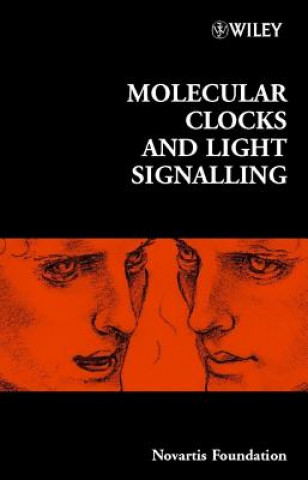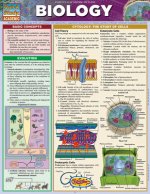
Kód: 04886297
Molecular Clocks and Light Signalling
Autor Novartis Foundation
The ability at the molecular level to keep track of time is a property shared by organisms ranging from the simplest unicells to humans. The primary feature of these biological clocks is their ability to entrain to environmental s ... celý popis
- Jazyk:
 Angličtina
Angličtina - Vazba: Pevná
- Počet stran: 306
Nakladatelství: John Wiley & Sons Inc, 2003
- Více informací o knize

5894 Kč
Dostupnost:
50 % šance Máme informaci, že by titul mohl být dostupný. Na základě vaší objednávky se ho pokusíme do 6 týdnů zajistit.
Máme informaci, že by titul mohl být dostupný. Na základě vaší objednávky se ho pokusíme do 6 týdnů zajistit.Prohledáme celý svět
Mohlo by se vám také líbit
-

Who Governs the Globe?
1315 Kč -

In the Evil Day
312 Kč -

Law of the Labour Market
6324 Kč -

Risk-Based Auditing
5181 Kč -

Reaching and Teaching All Children
916 Kč -

Napa Valley Style
1114 Kč -

Malory and his European Contemporaries
3270 Kč
Darujte tuto knihu ještě dnes
- Objednejte knihu a zvolte Zaslat jako dárek.
- Obratem obdržíte darovací poukaz na knihu, který můžete ihned předat obdarovanému.
- Knihu zašleme na adresu obdarovaného, o nic se nestaráte.
Informovat o naskladnění knihy
Zadejte do formuláře e-mailovou adresu a jakmile knihu naskladníme, zašleme vám o tom zprávu. Pohlídáme vše za vás.
Více informací o knize Molecular Clocks and Light Signalling
Nákupem získáte 589 bodů
 Anotace knihy
Anotace knihy
The ability at the molecular level to keep track of time is a property shared by organisms ranging from the simplest unicells to humans. The primary feature of these biological clocks is their ability to entrain to environmental stimuli. The dominant stimulus comes from environmental light cues, which requires the existence of photopigments sensitive to light. The exact identity of the molecules involved in circadian photoreception has remained elusive. The classical view of the circadian system is of diverse physiological rhythms regulated by a centralized clock structure. This book presents evidence that challenges this view. Experiments in both vertebrate and invertebrate systems demonstrate that the circadian timing system is dispersed throughout the animal and suggest that possibly every cell contains an autonomous clock mechanism. A variety of tissues and cells contain have been shown to maintain an oscillation when placed in vitro and removed from any external cues or signals that originate from the classical clock structures and/or the environment. This book draws together contributions from an international and interdisciplinary group of experts whose work is focused on all aspects of the topic. Coverage includes the mechanisms of light signalling to the vertebrate clock, the connections between central and peripheral clocks, circadian gene expression patterns and output pathways of clock mechanisms.
 Parametry knihy
Parametry knihy
Zařazení knihy Knihy v angličtině Mathematics & science Biology, life sciences
5894 Kč
- Plný název: Molecular Clocks and Light Signalling
- Autor: Novartis Foundation
- Jazyk:
 Angličtina
Angličtina - Vazba: Pevná
- Počet stran: 306
- EAN: 9780470852835
- ISBN: 0470852836
- ID: 04886297
- Nakladatelství: John Wiley & Sons Inc
- Hmotnost: 630 g
- Rozměry: 237 × 164 × 19 mm
- Datum vydání: 22. October 2003
Oblíbené z jiného soudku
-

Behave
462 Kč -

Behave
710 Kč -

Fantastic Fungi
692 Kč -

Scent and Chemistry - The Molecular World of Odors
2210 Kč -

Biology: A Global Approach, Global Edition
1918 Kč -

Alan Turing - The Enigma - The Book That Inspired the Film The Imitation Game - Updated Edition
289 Kč -

Oxford IB Study Guides: Biology for the IB Diploma
1056 Kč -

Ecology - From Individuals to Ecosystems 5e
1629 Kč -

Biology Coloring Workbook, 2nd Edition
581 Kč -

Biology - A Self-Teaching Guide, Third Edition
523 Kč -

Cartoon Guide to Biology
410 Kč -

Preparing Dinosaurs
2216 Kč -

Biology
188 Kč -

Schaum's Outline of Biology, Fifth Edition
948 Kč -

Extracellular Matrix in Development and Disease
2163 Kč -

Immortal Life of Henrietta Lacks
316 Kč -

ISE Vertebrates: Comparative Anatomy, Function, Evolution
1906 Kč -

Biology
3416 Kč -

Genius of Birds
399 Kč -

Campbell Biology in Focus, Global Edition
2071 Kč -

Blood and Its Third Element
460 Kč -

Oxford IB Diploma Programme: IB Biology Print and Enhanced Online Course Book Pack
2467 Kč -

A-Level Biology: AQA Year 1 & 2 Complete Revision & Practice with Online Edition
700 Kč -

Molecular & Cell Biology For Dummies, 2nd Edition
471 Kč -

Advanced Biology
1875 Kč -

Biology For Dummies 3e
471 Kč -

Molecular Ecology, Third Edition
2037 Kč -

Ib Biology Online Course Book 2014 Edition: Oxford Ib Diploma Programme
2744 Kč -

Dirt
602 Kč -

Biophilia
827 Kč -

Bovine Reproduction, 2nd Edition
8864 Kč -

A-Level Biology: AQA Year 1 & AS Exam Practice Workbook - includes Answers
199 Kč -

Mitochondria and the Future of Medicine
544 Kč -

Molecular Biotechnology - Principles and Applications of Recombinant DNA, 6th Edition
3624 Kč -

Lizards of the World
3995 Kč -

A-Level Biology: Edexcel A Year 1 & 2 Complete Revision & Practice with Online Edition
700 Kč -

Oxford IB Diploma Programme: Biology Course Companion
1620 Kč -

Pearson Baccalaureate Biology Higher Level 2nd edition print and ebook bundle for the IB Diploma
2184 Kč -

Biology for the IB Diploma Study and Revision Guide
945 Kč -

Seven and a Half Lessons About the Brain
410 Kč -

DNA
357 Kč -

IB Environmental Systems and Societies Print and Online Pack
2103 Kč -

Bioinformatics For Dummies 2e
611 Kč -

Internal Assessment for Biology for the IB Diploma
1016 Kč -

ISE Vander's Human Physiology
1800 Kč -

Microbiology & Infectious Diseases Flashcards, Third Edition
1404 Kč -

Biology for the IB MYP 4 & 5
1655 Kč -

Hacking Darwin
576 Kč -

Growth of Biological Thought
1258 Kč
Osobní odběr Praha, Brno a 12903 dalších
Copyright ©2008-24 nejlevnejsi-knihy.cz Všechna práva vyhrazenaSoukromíCookies


 Vrácení do měsíce
Vrácení do měsíce 571 999 099 (8-15.30h)
571 999 099 (8-15.30h)